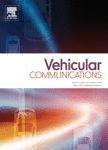版权所有:内蒙古大学图书馆 技术提供:维普资讯• 智图
内蒙古自治区呼和浩特市赛罕区大学西街235号 邮编: 010021

作者机构:Nanyang Inst Technol Sch Comp & Software Nanyang 473000 Peoples R China Zhengzhou Univ Sch Comp & Artificial Intelligence Zhengzhou 450001 Peoples R China Wuhan Univ Sch Comp Sci Wuhan 430072 Peoples R China Xinjiang Univ Polit Sci & Law Sch Informat Network Secur Tumushuke 843900 Peoples R China
出 版 物:《VEHICULAR COMMUNICATIONS》 (Veh. Commun.)
年 卷 期:2025年第52卷
核心收录:
学科分类:0810[工学-信息与通信工程] 08[工学] 0823[工学-交通运输工程]
基 金:Natural Science Foundation of Henan Province National Natural Science Foundation of China
主 题:UAV UGV Ground-air cooperative Edge computing Computation offloading
摘 要:Due to the shortage of energy resources and computational capability, unmanned aerial vehicles (UAVs) tend to fail to execute tasks with time-delay sensitive and complex demands like artificial intelligence (AI) enabled applications. Most offloading method literature in ground-air cooperative systems simply uses edge servers or remote cloud servers to provide computation resources and storage space. Unfortunately, their performance degrades since it is difficult to guarantee UAV s quality of experience (QoE) considering the long-distance transmission delay. To address this issue, this paper proposes a ground-air cooperative edge computing framework in which multiprocessing computation is implemented by the UAVs locally or offloads specific calculations to the edge server on unmanned ground vehicles (UGVs). The proposed framework consists of two innovative mechanisms: one is to consider a mobility-aware link prediction method and other indicators, including compute capacity and workload, to ensure a stable offloading environment, the another is to propose an energy-efficient distributed computation offloading algorithm (EDCOA) by modelling the computation offloading issue for UAVs as an analytical optimization problem. By offloading subtasks to multiple UGV nodes for multiprocessing, UAVs can leverage the computation resources of the surrounding edge network entities to enhance their computational capabilities. Extensive experiments and comparisons with state-of-the-art realtime offloading methods showed that the proposed framework outperforms other approaches by delivering better performance in reducing UAV energy consumption, ensuring successful task offloading rates and meeting latency requirements.